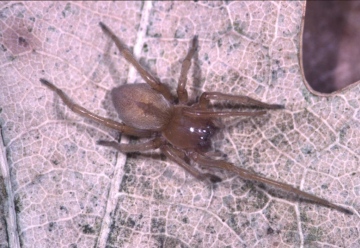Summary for Cheiracanthium virescens (Araneae)
previous species | next species
National Distribution
Terms of Use. Double-click on map to go to region

Explore Regional Distribution
Please log on and add a note on this species
About this species
Recorded altitude range0m to 192m
Species text
DistributionThe species has a scattered distribution in Britain as far north as central Scotland, but is widespread only in parts of southern and eastern England. It is widespread in western and central Europe.
Habitat and ecology
The spider occurs under stones, or low vegetation such as heather, in dry, sandy or sparsely vegetated areas in open habitats such as heathland, waste-ground and dunes. It generally remains in a silk cell during the day and the egg-sac is also hidden away under a stone. Although mostly uncommon it is probably the Cheiracanthium species most often found on heathland and particularly on young heather. Adults of both sexes are found mainly in late spring/early summer and autumn.
Status
Although generally uncommon, the spider may be quite frequent in the south. Recorded from 54 hectads since 1992.
Threats
Potential threats include loss of dry heathland to agriculture and urban development as well as damage to sand dunes due to recreational pressures.
Management and conservation
Protect heathland sites from encroachment by agriculture and urban sprawl and manage sand dune sites to reduce recreational pressures.
Text based on Dawson, I.K., Harvey, P.R., Merrett, P. & Russell-Smith, A.R. (in prep.). References
Adult Season
Habitats
background methodology
Recorded management for locations with Cheiracanthium virescens
Recorded substrate and hydrology for locations with Cheiracanthium virescens
Images
please log on and upload a new image for this speciesSee also A-Z Species Index - A-Z Picture Index - previous species | next species

